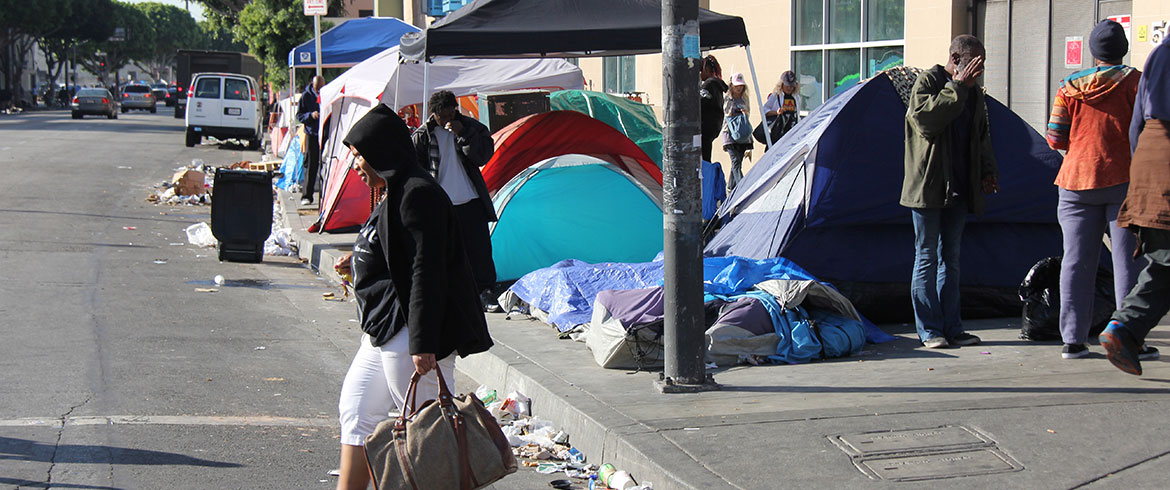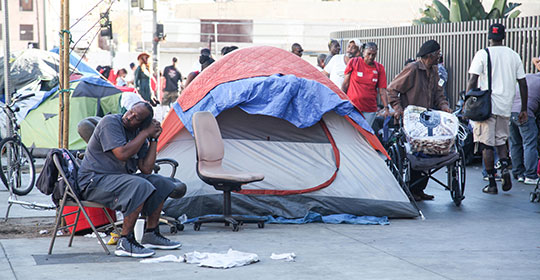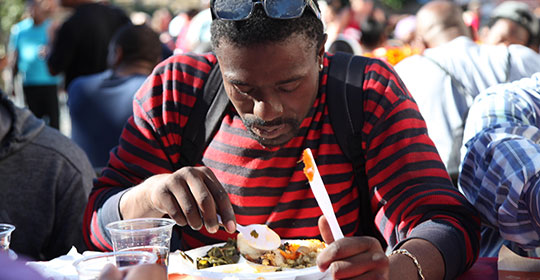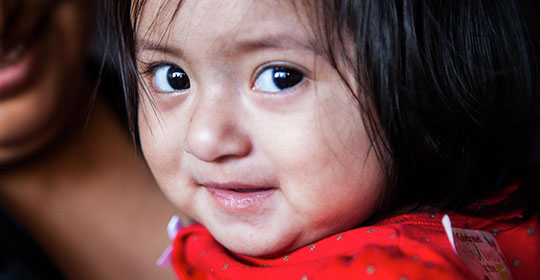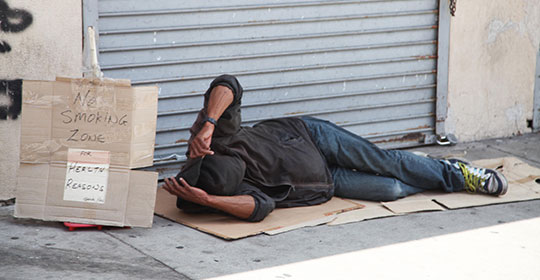I have been a volunteer at Los Angeles Mission since June 2014, shortly after I moved to LA from the Greater Cincinnati Area. I was referred to CEO Herb Smith, via Roger Howell at City Gospel Mission in Cincinnati where I previously volunteered. When I first met with Herb, I immediately felt the presence of something special.
I believed then – and still do – that Los Angeles Mission is a safe place filled with love, compassion, humility, and non-judging people. Whether you are a student, volunteer, or employee, everyone really wants to be there, and all for various, good reasons. Some are starting their journey of recovery and spiritual growth, and many of us are working hard to stay the course. It is a journey, and there is no finish line as it never ends.
At the Mission, I first met with Chaplain Allen Ceravolo, Director of Career Services. It was a great meeting. While at City Gospel, I was involved in New Business Development, which involved identifying potential employer relationships with the students. Allen and I discussed this for quite some time. However, he offered me something special: An opportunity to work directly with Los Angeles Mission students engaged in Career Services and the “Life Start” program. I accepted.
Best decision of my life
My primary responsibility is to help students prepare for job interviews. Many of these students have “hard luck” stories involving poverty, substance abuse, mental disorders, physical and mental abuse, domestic violence victims, or criminal records. Others have high school diplomas or college degrees and have moved to LA in pursuit of their dreams. But once here, they have found it difficult to get by in this large and great city.
These students make a 12-month commitment to themselves, to a better life, and to reconnect with God or a higher power. For many students, it is a challenging and trying process from the very first days to the time of their first job interview.
There are many students who have to work extremely hard, turned inward, and who need to heal and recover from many afflictions. Some also realize that this might be their “last stand,” and they are very devoted to healing and making things right for themselves and their loved ones. They realize they have a great opportunity at Los Angeles Mission, and they work hard to make the most of it. Again, there are also many students who need help and guidance to get back on their feet, mature, accept responsibility for their lives, and of course move forward and do their very best.
Giving what we all need: Hope
I get introduced to students after day 90 of the program, and we start to get to know each other a little bit. At this time, they have many thoughts racing through their heads: questions, fears, doubts. I keep the meetings fairly short in the beginning. I emphasize that they have made a great choice and commitment and that if they choose to stay and work, we collectively can find every student an opportunity. We give them hope!
As you can imagine, many students have some reservations, anxiety, and fear. Some have not had a job in many years. Some have fallen prey to addiction, and some have had to deal with consequences of criminal misconduct. Some fear that if they have to discuss their past in a job interview, they will be judged and not given an opportunity to work and provide for themselves and their families.
At Los Angeles Mission, we make every effort to reassure all students that the 12-month commitment to this program is a sign of strength. We encourage them to be honest and not ashamed of their past. I make suggestions in terms of how they can be truthful but how it is not required to delve into every detail of their past. I empower them not to let the interviewer determine where to take the interview.
I tell students that everything we are doing is “practice,” and there is no pass/fail. I tell them that if they stay committed, we will find them opportunity.
I can tell you that there has never been anything more rewarding in my life than when a student comes back to visit and they walk in confidently with their face all lit up with excitement. They tell me, “Mr. Pomeroy, I did it the way we practiced and I got the job!” I do not have the words to describe this feeling.
I have learned much more about many things in the last 2 and ½ years. Among them are compassion and humility, and the importance of being non-assuming and non-judging. I’ve learned to not take things personally and above all, I’ve learned much more about LOVE. And for that I am truly blessed and grateful. Happy Holidays!

